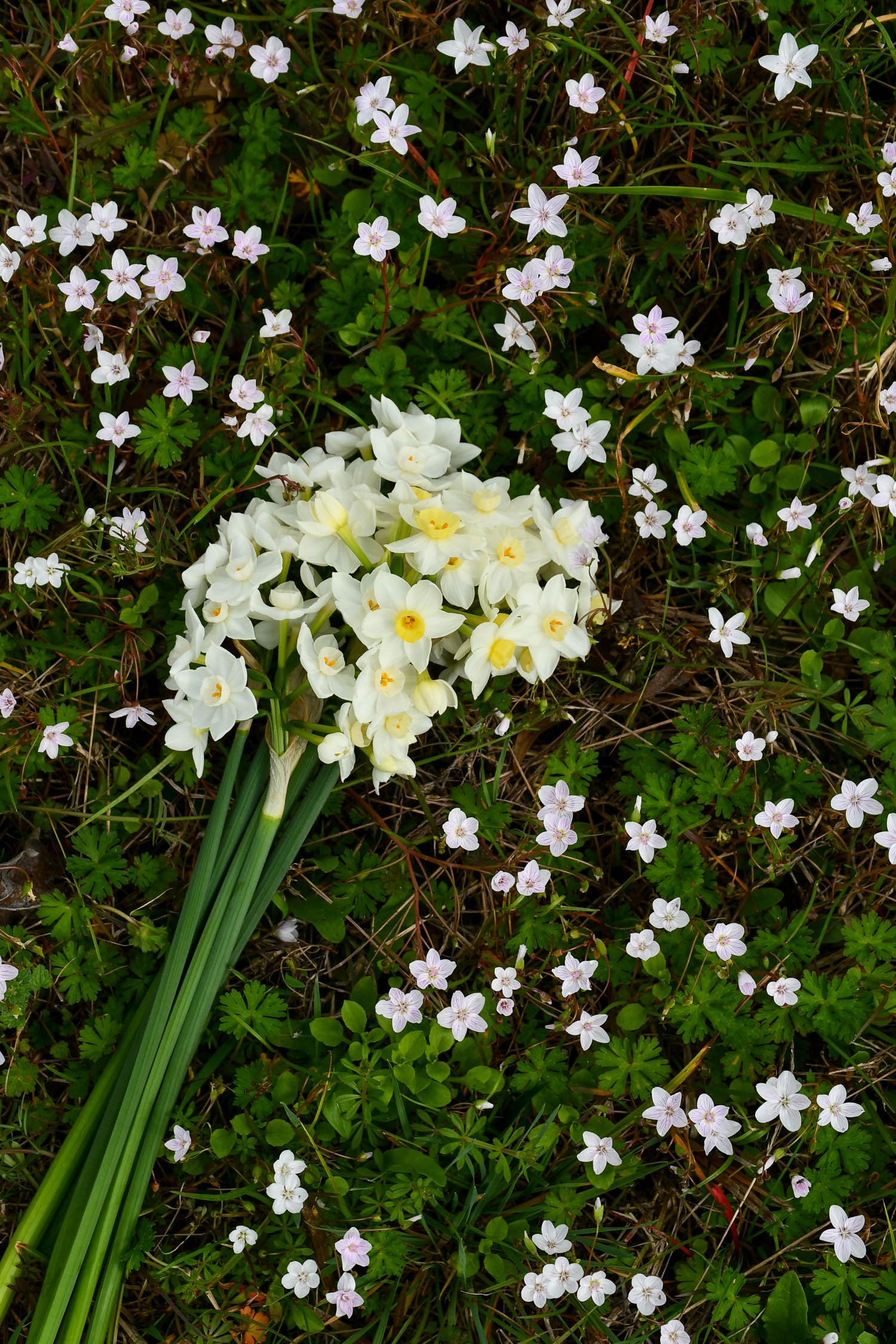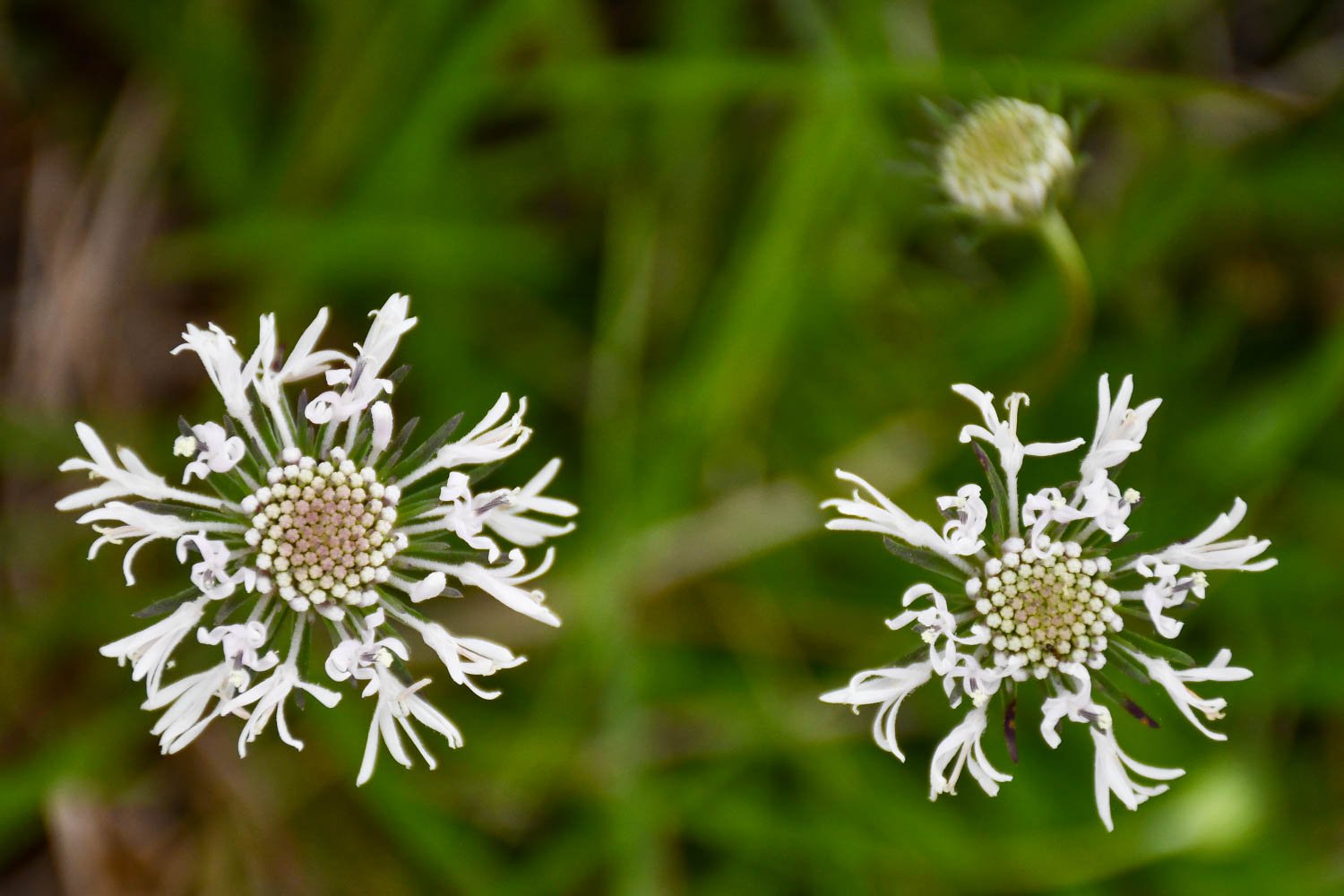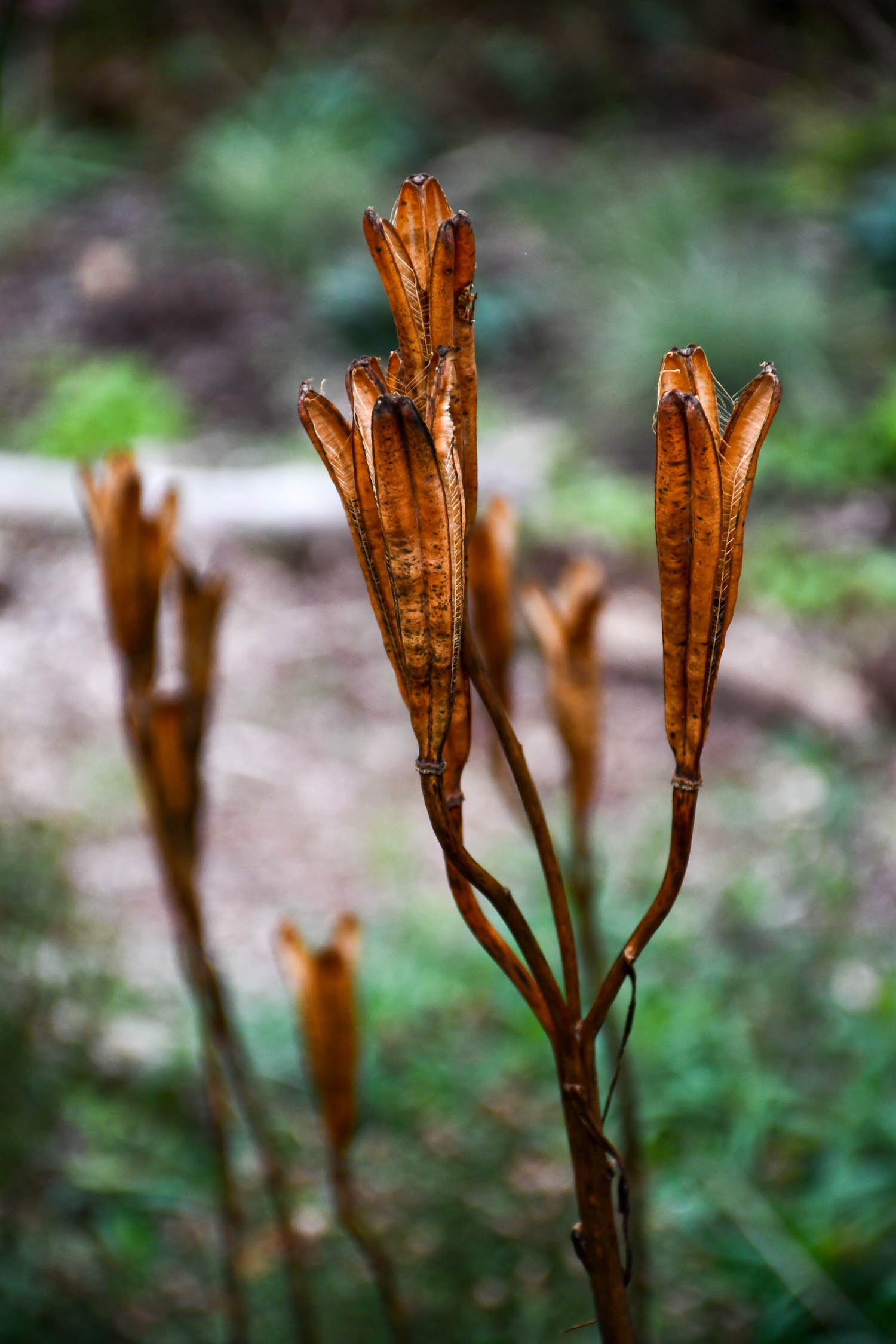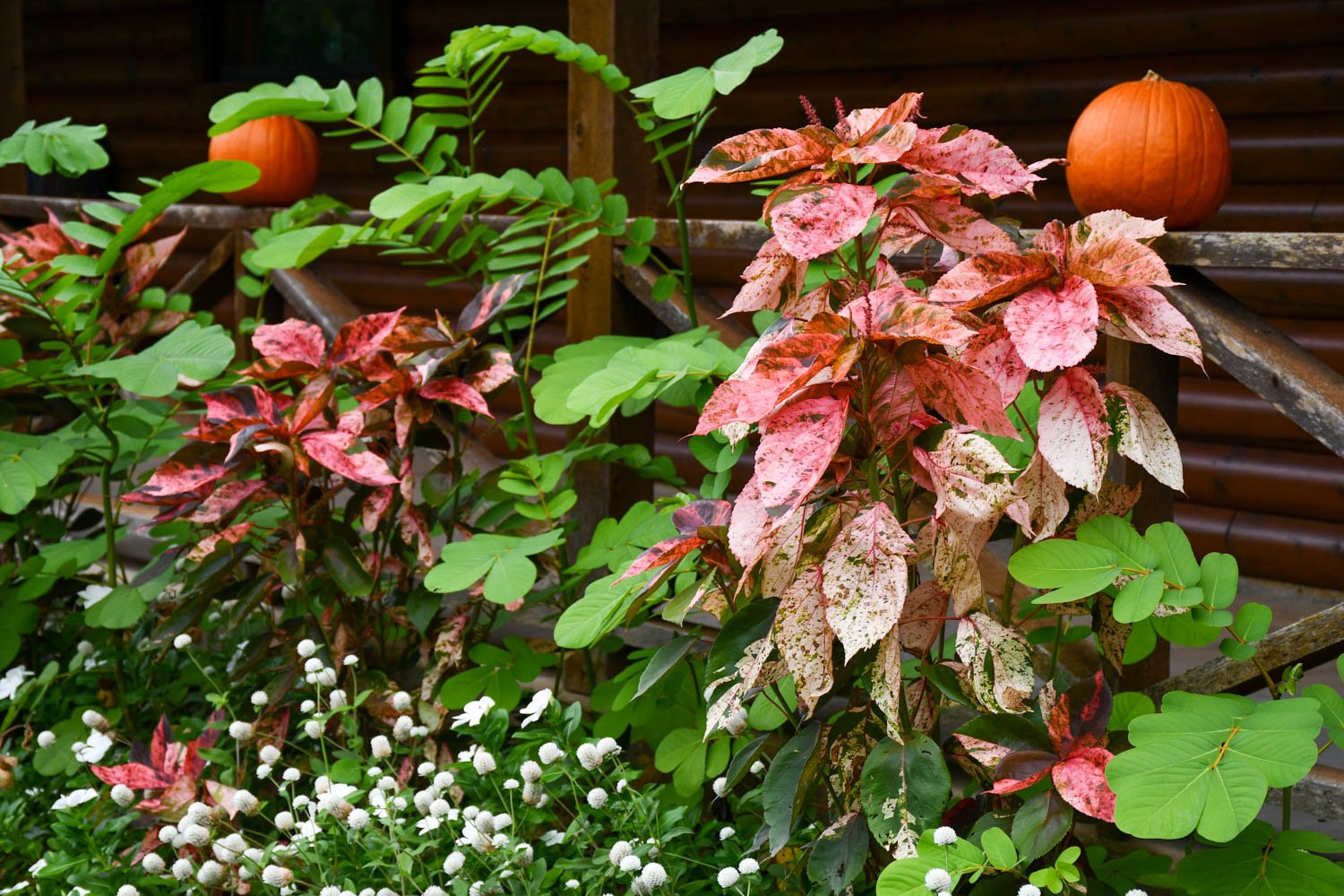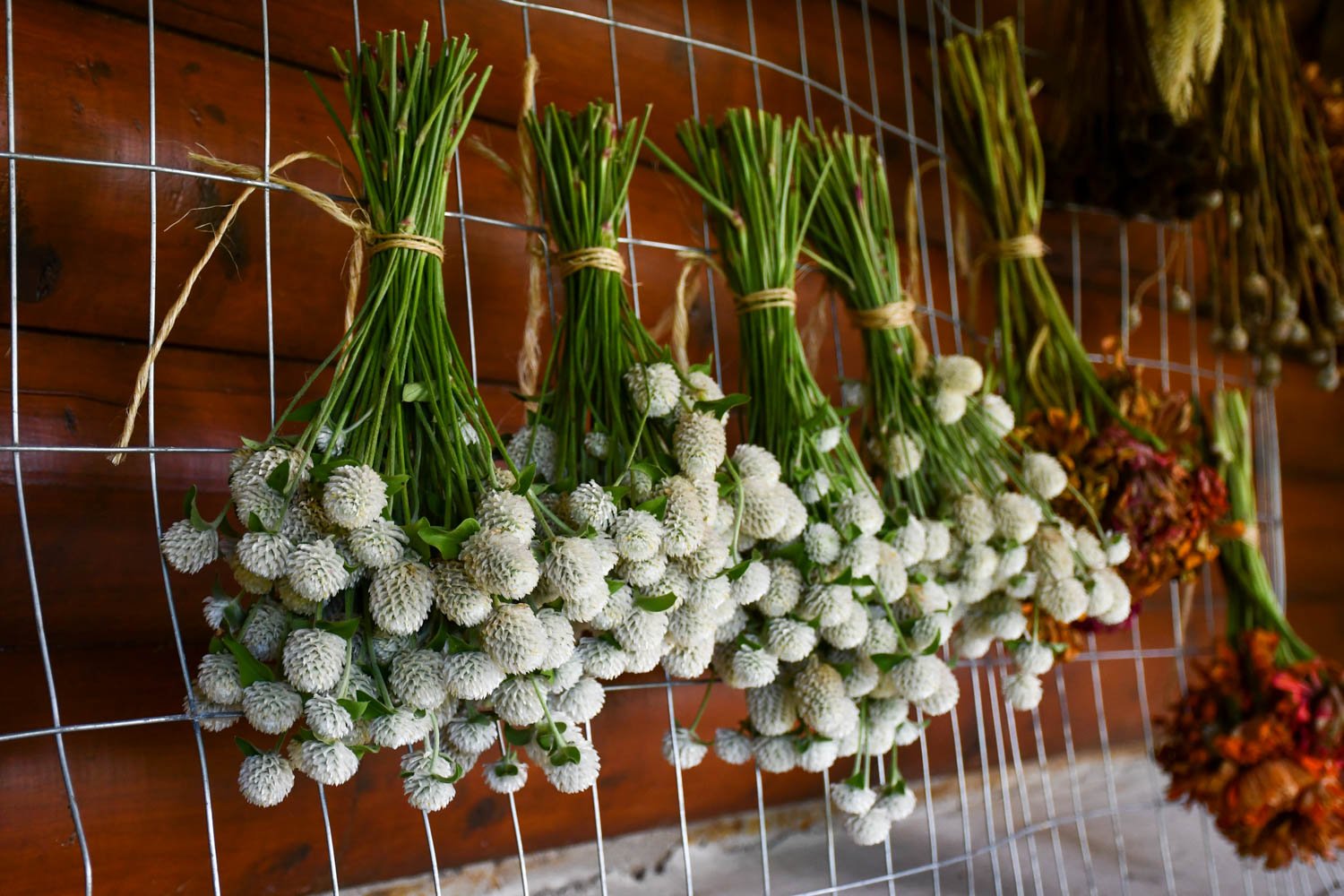I hold off mowing the yard as long as I can in the spring as the turf is full of little treasures in late winter. From the first weeks of December, Claytonia virginica (spring beauty) has been crescendoing to its peak. Nothoscordum bivalve (crow poison) starts a little earlier, their white and yellow scapes appear after the first rains of autumn, and now thousands twinkle in the lawn.
And, down along either side of the driveway by the ditch we have Anemone caroliniana (Carolina windflower). Their pinwheels stretch up a foot above the fray saying, “Look at me!” The drop off beside the culvert provides a spot where I can crouch and put myself on the flowers’ plane without having to lay down much.
Being that it’s the only spot on the property that these flowers bloom I’m left to wonder how it got here. Was it planted? There are other spots wetter. There are other spots more sloped. But, it is here either side of the drive that they have found their home.
The flowers are small, not much larger than a quarter, and like other anemones are apetalous. The colorful whorl we see are sepals. Our patch only has white flowered forms with a splash of purple on the undersides of the calyx, but I’ve seen photos of the purple variants. And, they dance and sway in the breeze, as if acknowledging the Greek origin of their name, anemos, which means wind.
Plants spread by seed and rhizomes, and their numbers have increased over the years since I have encouraged their growth by holding back the mower blade. Their dissected leaves are now easy to pick out since I have a mental search image, but before I identified them, they just looked like a weed in the lawn.
I struggled a bit the first year trying to figure out which anemone I had as Carolina windflower is very close in resemblance to Anemone berlandieri (ten-petal anemone). But, I realized they can be distinguished by the three-lobed involucres that occur on the scape that holds the flowers aloft. Anemone berlandieri occurs above the midpoint of the scape, and Anemone caroliniana occur below the midpoint.
If I was adamant about mowing, I would probably never see these little jewels. However, I am content to let the mower rest for a few more weeks to allow the windflowers to spread and ensure that even more return next year.









